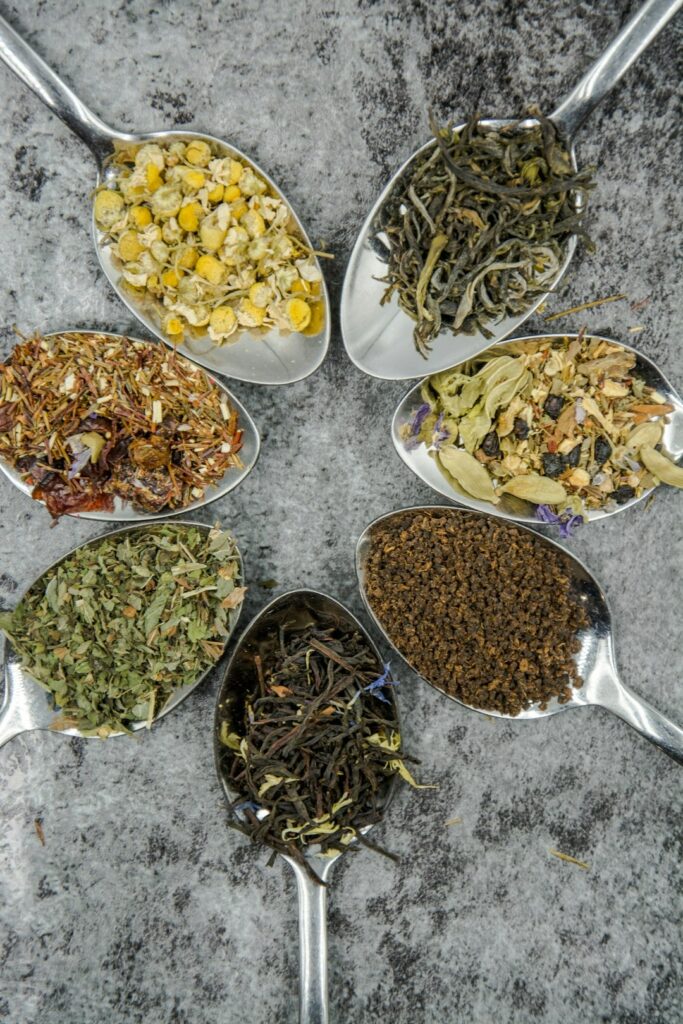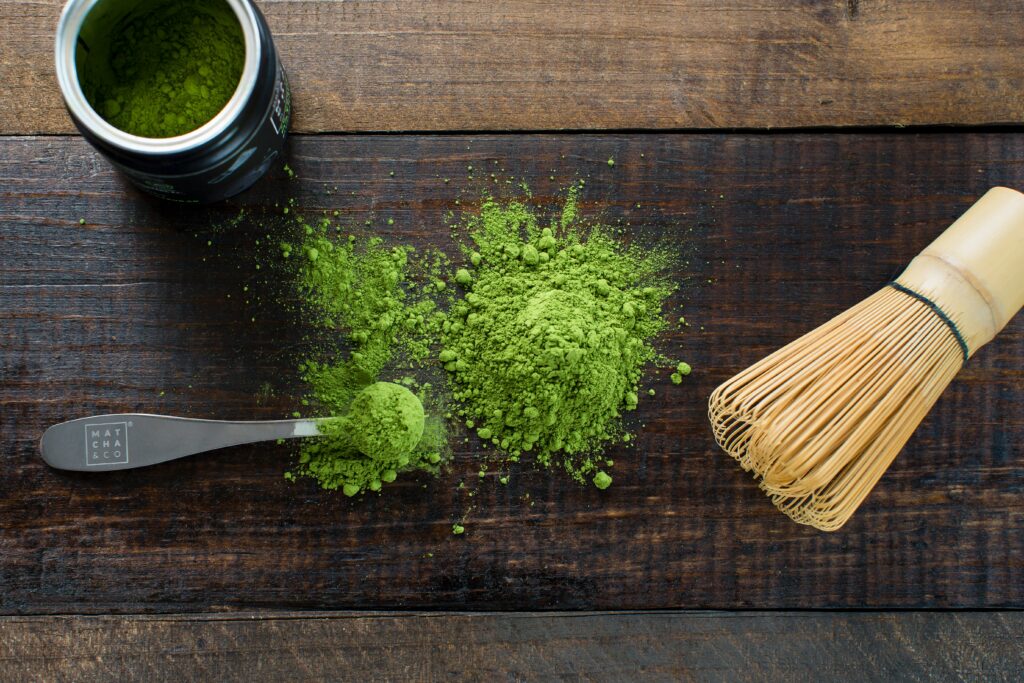

When comparing matcha tea vs green tea, the differences are as intriguing as their similarities. Both come from the Camellia sinensis plant, but their production, preparation, and health benefits set them apart.
- Preparation Methods:
Green tea involves steeping tea leaves in hot water, with the leaves discarded afterward. Matcha tea, on the other hand, is made by whisking finely ground green tea powder into hot water, allowing you to consume the entire leaf. This makes matcha more nutrient-dense. - Caffeine Content:
In the matcha tea vs green tea debate, matcha has a higher caffeine content. A single serving of matcha contains about 30-70 mg of caffeine, while green tea averages 20-30 mg. Matcha’s caffeine provides a smooth, long-lasting energy boost thanks to its L-theanine content. - Nutritional Profile:
Because you’re consuming the entire leaf, matcha is richer in antioxidants, including EGCG, than green tea. This makes matcha particularly beneficial for metabolism, energy, and overall wellness.
When choosing between matcha tea vs green tea, consider your preferences and needs. If you’re looking for a milder option with a light flavor, green tea is a great choice. For a nutrient-dense superfood that offers more energy and health benefits, matcha is the winner.
Want to explore more? Check out our guides on matcha benefits and how to make matcha to learn about incorporating this vibrant tea into your lifestyle.
Still interested in the difference? Check out this article from Artoftea